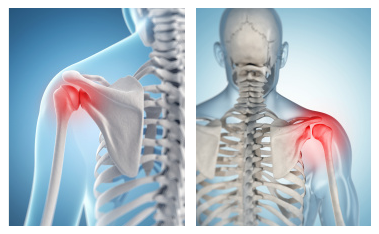Superior Labral Repair (Shoulder)
Milwaukee Shoulder Surgeon Treats Work Injuries
 Superior Labral Repair is a surgical procedure done to treat torn labrum called a SLAP tear inside the shoulder joint on the glenoid (socket). This type of tear occurs at the top (superior) portion of the labrum. The biceps tendon also attaches to the labrum in this area of the socket. Milwaukee shoulder surgeon, Ted Gertel, treats work injuries involving this. The goal of this surgery is to re-attach torn labrum on the socket and allow it to heal. Superior labral repair surgery is most commonly done as an all-arthroscopic repair (visualized using a camera and video monitor; performed using small surgical instruments through very small incisions).
Superior Labral Repair is a surgical procedure done to treat torn labrum called a SLAP tear inside the shoulder joint on the glenoid (socket). This type of tear occurs at the top (superior) portion of the labrum. The biceps tendon also attaches to the labrum in this area of the socket. Milwaukee shoulder surgeon, Ted Gertel, treats work injuries involving this. The goal of this surgery is to re-attach torn labrum on the socket and allow it to heal. Superior labral repair surgery is most commonly done as an all-arthroscopic repair (visualized using a camera and video monitor; performed using small surgical instruments through very small incisions).
During superior labral repair surgery, the labrum and the biceps tendon will be examined using a small probe. If there is no significant tearing of the biceps tendon, then a superior labral repair will be completed. The repair will involve using a bioabsorbable anchor (or anchors) that has attached sutures. The anchor is fixed into the socket underneath the torn superior labral tissue and biceps anchor site. The sutures are then used to tie down and secure the labral tissue and biceps tendon to the normal attachment site on the socket. If the biceps tendon has a significant tear, some superior labral injuries require cutting the biceps tendon attachment (biceps tenodesis).
A biceps tenodesis is a procedure that involves cutting the biceps tendon inside the shoulder joint and reattaching the tendon to the upper arm bone (humerus). The pressure of the biceps attachment is taken off the labrum after performing a biceps tenodesis.
Factors that help determine if a superior labral repair is necessary include:
- Your pain level (especially if pain will not go away after trying non-surgical treatment options)
- Type of SLAP tear
- Decreased shoulder motion and/or function
- Feelings of grinding, catching, locking, or popping sensation
- Increased pain with lifting objects, especially overhead
MRI Scan Before Surgery
An MRI arthrogram is commonly obtained to help determine the severity of the labral tear in preparation for surgery. If the tear is unstable, then a superior labral repair is often required to help decrease pain and restore shoulder function. In some cases, a labral repair cannot be completed if the quality of your labral tissue and bone is poor. If there is a labral tear that is stable upon probing, you may need only a trimming/shaving procedure called arthroscopic debridement. Your surgeon will determine if a labral repair is indicated depending on the type of SLAP tear.
Surgery is done as an outpatient procedure (you are able to go home the same day). There are always risks and benefits of surgery, and there are never any 100% guarantees regarding the outcome of surgery. The surgeon’s goal is to minimize the risks and help guide you to the best path of recovery. Rehabilitation is very important after surgery. Initially, during the first 3-4 weeks after surgery your arm will be immobilized in a sling to allow early healing of your labrum.
After the initial period of rest, physical therapy and a home exercise program will help you gradually regain shoulder motion, improve strength, and restore shoulder function. Complete recovery time may take several months or sometimes even up to a year. The majority of patients notice significant improvements by 4 to 6 months after surgery. Most patients report significantly less pain as well as increased shoulder motion, strength, and overall function after recovering from a labral repair.